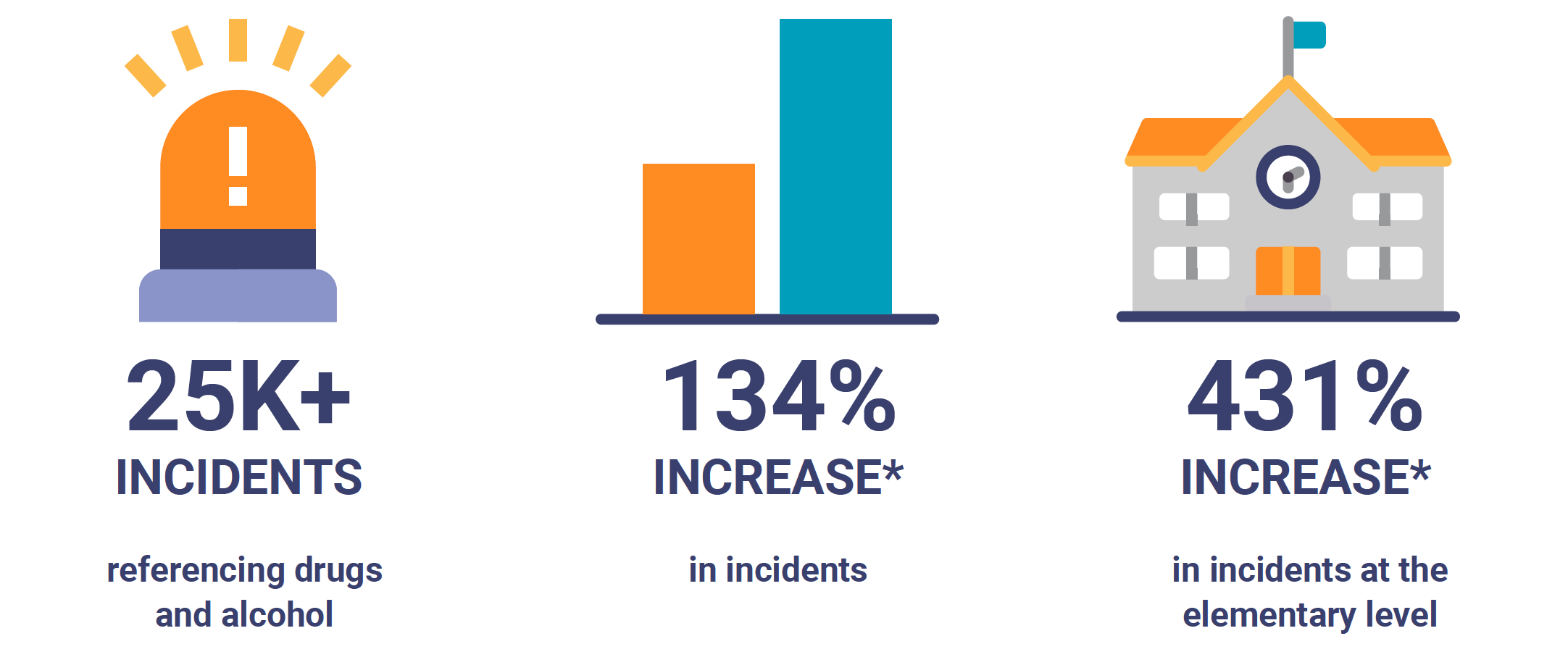Students across all grade levels referenced drugs and alcohol at increasing rates during the 2020–21 school year. Overall, Gaggle revealed a 134% uptick in student safety incidents flagged in this category, increasing from 21 incidents up to 50 incidents per 10,000 students. At the elementary level, the increase is an overwhelming 431% compared to the previous school year, rising from two incidents up to 11 incidents per 10,000 students. While incidents at the elementary level aren’t occurring as frequently as the higher grade levels, this tremendous growth in just one school year is incredibly worrisome.

“Drugs and alcohol have been an issue for our adolescents for eternity. However, the pandemic brought this quiet epidemic into our elementary-aged children’s lives at alarming rates during the 2020–2021 school year,” shared child psychologist Dr. Lisa Strohman. “Society faces a double-edged problem concerning drug and alcohol use among children: many grow up watching their parents do it and copycat this behavior; others do it believing that those substances will solve their stresses and unhappiness. This is a serious uphill battle, as the 431% increase in elementary school incidences demonstrates.”
In total, Gaggle flagged more than 25,000 student safety incidents referencing drugs and alcohol during the 2020–21 school year. When reviewing incidents in this category, our Gaggle Safety Team members consider whether the student is referencing past use, present use, or intent to use in the future. Incidents of current or planned use are treated with a greater sense of urgency to help educators proactively intervene. Past cases still result in communications to emergency contacts, providing schools and districts with the opportunity to follow up with the student and see if use is ongoing or whether any help is needed.
“A lot of the incidents that we see through Gaggle are students wishing to do self-harm. Whether they’re journaling about depression or past incidents that occurred to them or drug usage, it all kind of goes back to self-harm.”
Melissa Craven, Director of Emergency Management, Denver Public Schools (CO)
What else did Gaggle find during the 2020–21 school year? And what are experts saying in response to our findings? Read our Through the Gaggle Lens: The State of Student Safety report to learn more.
*Increases reflect incident rates per 10,000 students compared to the 2019–20 school year, accounting for growth in Gaggle’s business.



Let Us Know What You Thought About This Post.
Put your comment below.